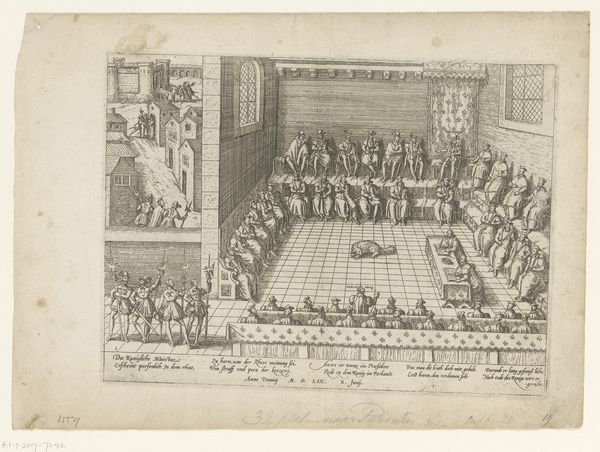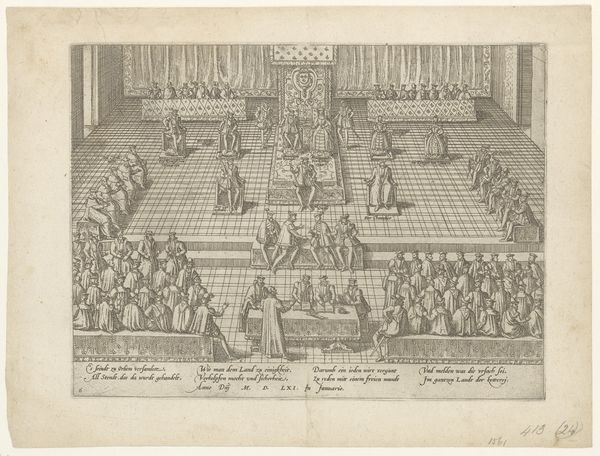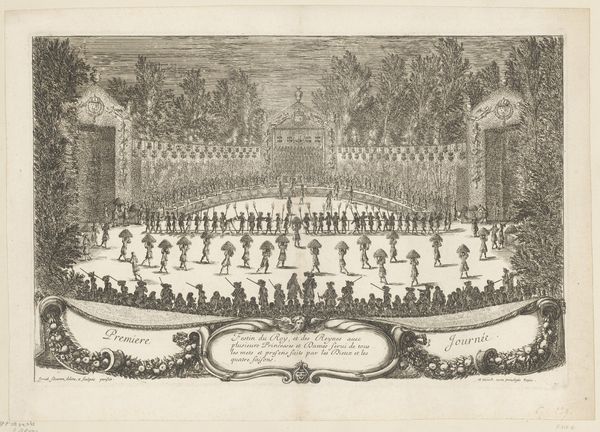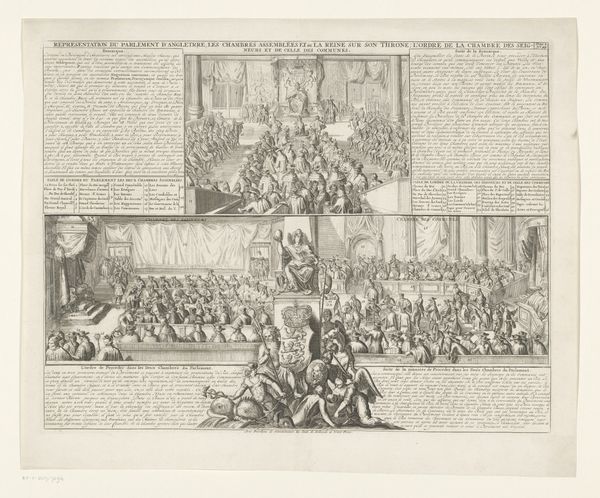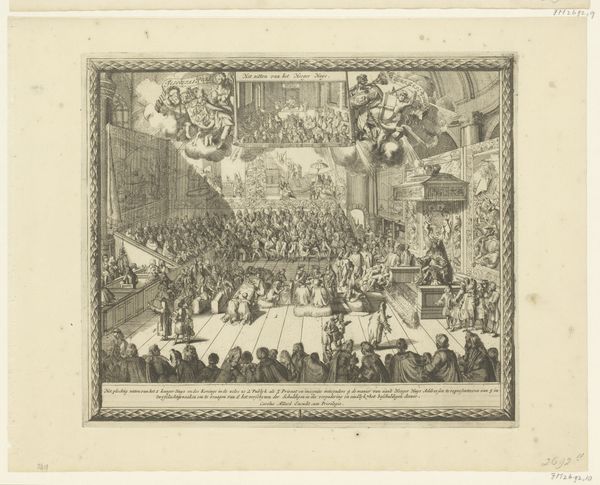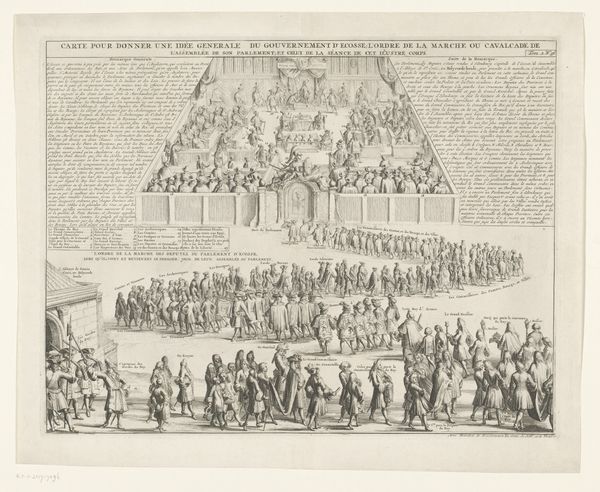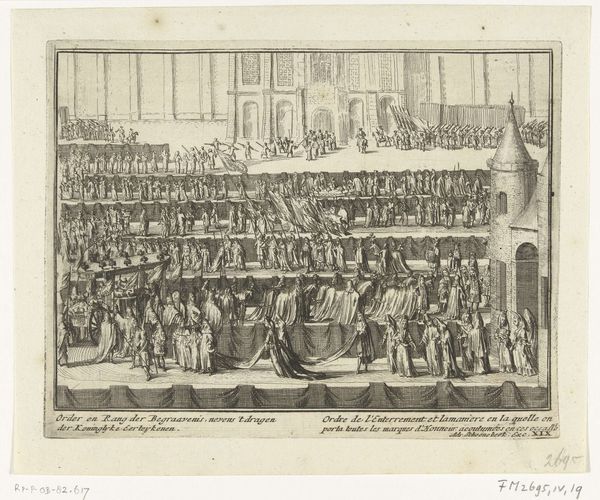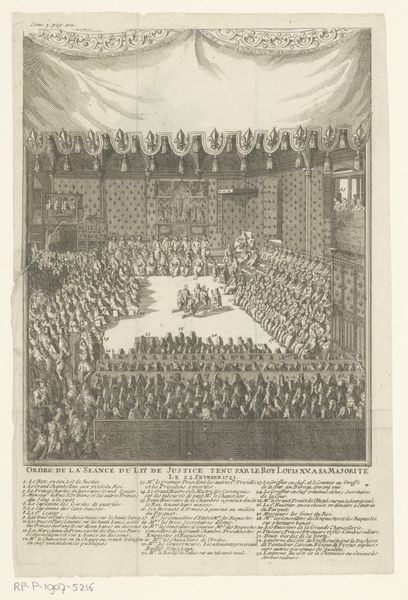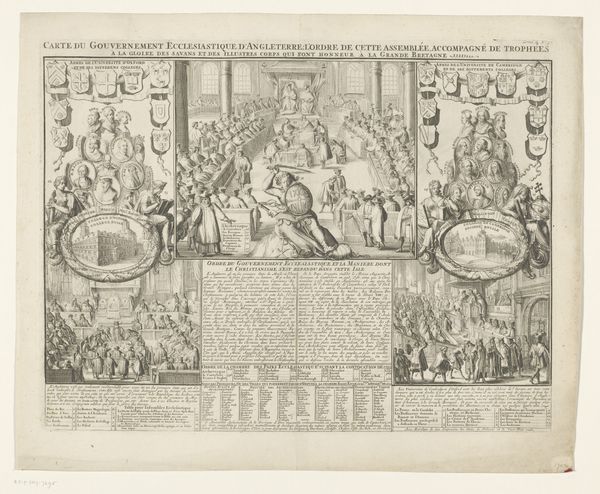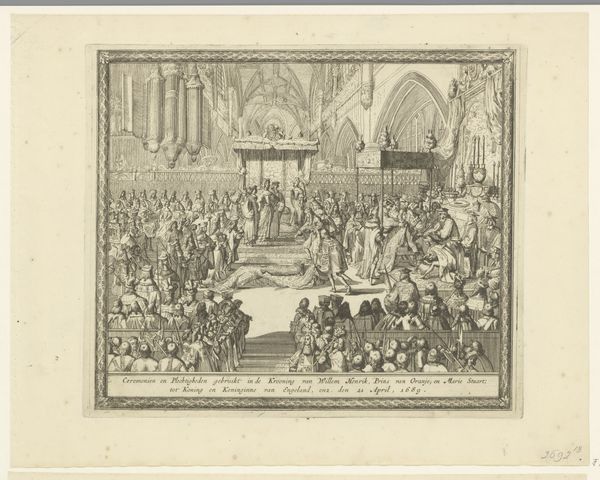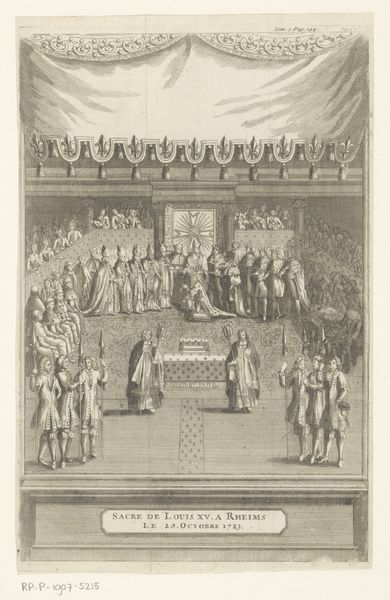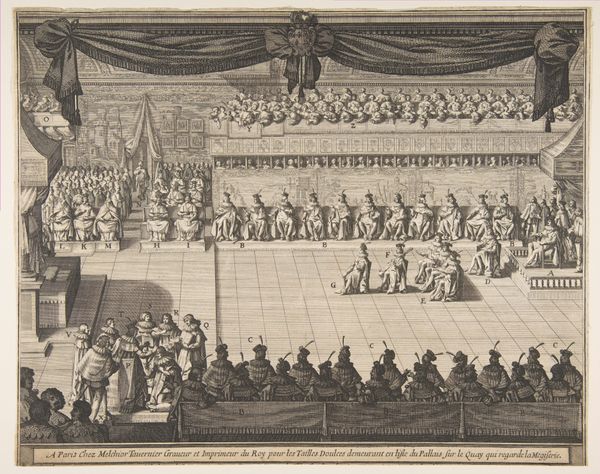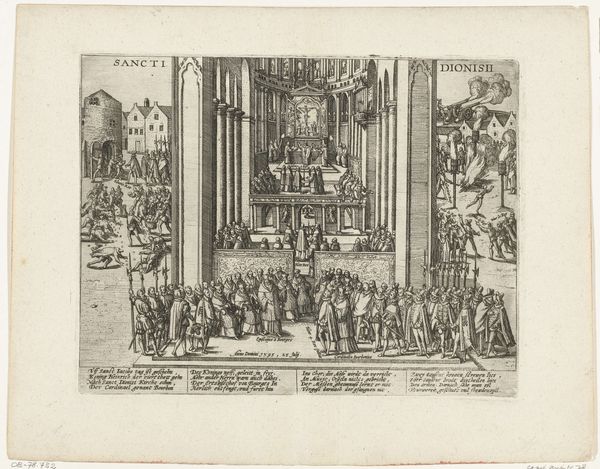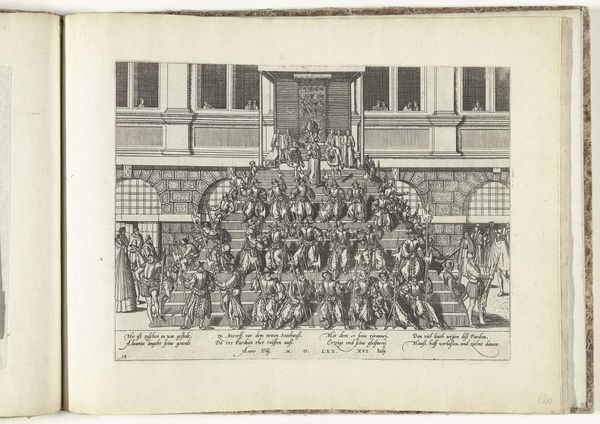
print, engraving
#
baroque
# print
#
history-painting
#
engraving
Dimensions: height 351 mm, width 473 mm
Copyright: Rijks Museum: Open Domain
This print, made by an anonymous artist in 1711, depicts the coronation of Emperor Charles VI. It was made using the intaglio process. This involved cutting lines into a metal plate, likely copper, inking the surface, and then wiping it clean, so that ink remained only in the incised lines. The plate was then pressed onto a sheet of paper, transferring the image. The precision of the lines speaks to the engraver's skill and labor. The technique allows for fine detail, crucial for portraying the opulence of the coronation. The use of printmaking allowed for the wide dissemination of the image, shaping public perception of the emperor and the Habsburg dynasty. Beyond its artistic merit, the print served a political purpose, reinforcing the emperor's authority through its mass production and distribution. In the end, understanding the "Kroning van keizer Karel VI" involves looking closely at the materials and processes used to create it, thus challenging traditional distinctions between fine art and craft.
Comments
No comments
Be the first to comment and join the conversation on the ultimate creative platform.
